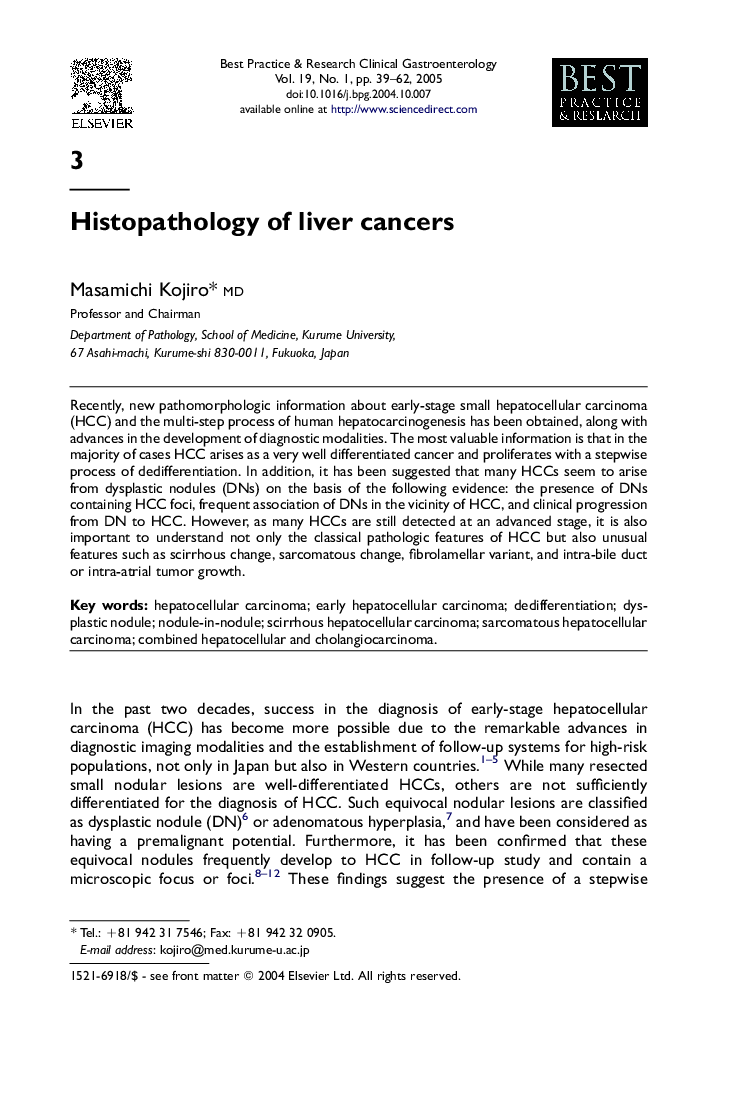| Article ID | Journal | Published Year | Pages | File Type |
|---|---|---|---|---|
| 9236149 | Best Practice & Research Clinical Gastroenterology | 2005 | 24 Pages |
Abstract
Recently, new pathomorphologic information about early-stage small hepatocellular carcinoma (HCC) and the multi-step process of human hepatocarcinogenesis has been obtained, along with advances in the development of diagnostic modalities. The most valuable information is that in the majority of cases HCC arises as a very well differentiated cancer and proliferates with a stepwise process of dedifferentiation. In addition, it has been suggested that many HCCs seem to arise from dysplastic nodules (DNs) on the basis of the following evidence: the presence of DNs containing HCC foci, frequent association of DNs in the vicinity of HCC, and clinical progression from DN to HCC. However, as many HCCs are still detected at an advanced stage, it is also important to understand not only the classical pathologic features of HCC but also unusual features such as scirrhous change, sarcomatous change, fibrolamellar variant, and intra-bile duct or intra-atrial tumor growth.
Keywords
Related Topics
Health Sciences
Medicine and Dentistry
Endocrinology, Diabetes and Metabolism
Authors
Masamichi (Professor and Chairman),
